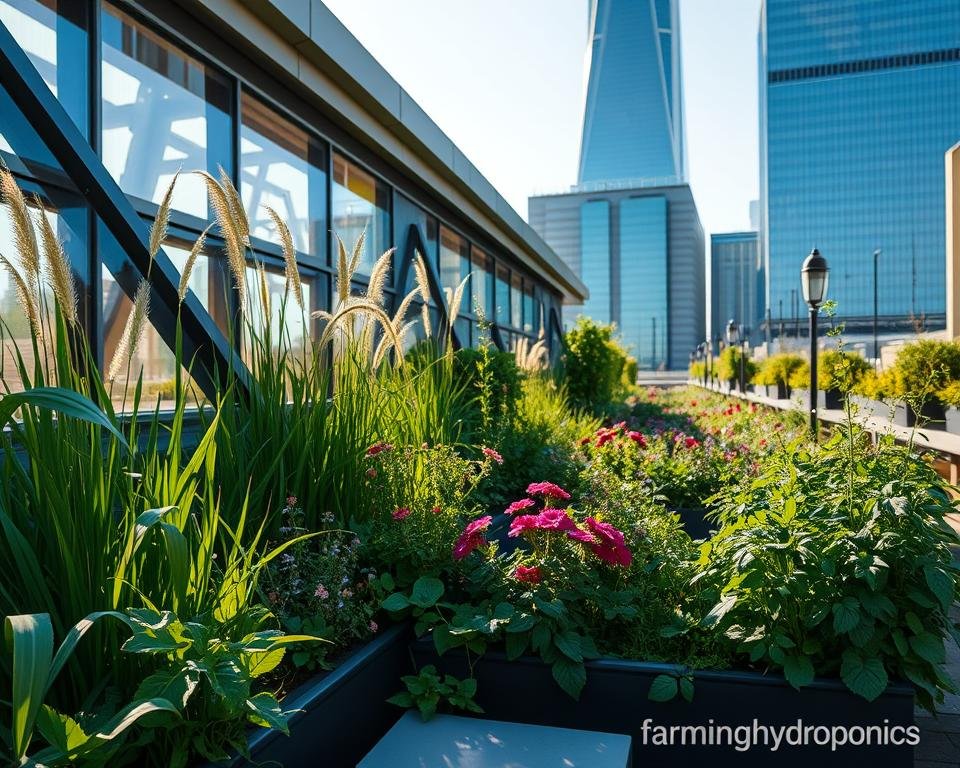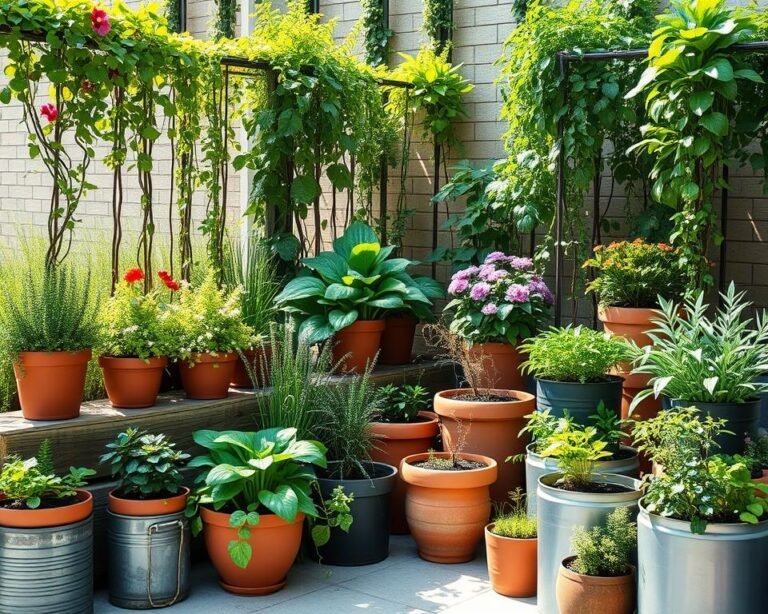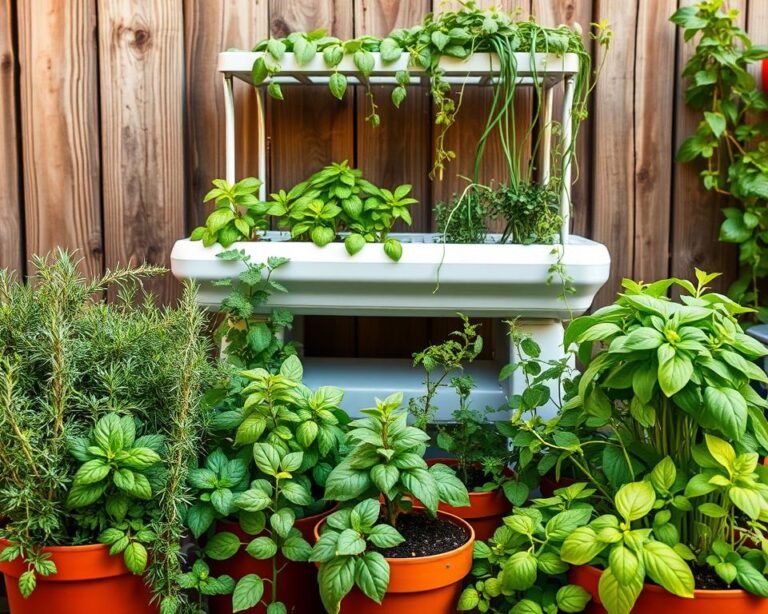Combining Green Roofs and Vertical Gardens for Maximum Impact
Imagine walking through a city where buildings are alive. Concrete walls turn into lush vertical gardens, and rooftops are covered in greenery. This isn’t just a dream—it’s the future of sustainable urban design.
As cities grow, we need new green solutions. Green roofs and vertical gardens are key to solving environmental problems. They make cities more livable.
By 2050, cities will be home to over two-thirds of the world’s people. Sustainable design is essential. Green roofs and vertical gardens change cities for the better. They cut energy use, clean the air, and help wildlife.
Key Takeaways
- Green-roofs can reduce building energy consumption by up to 30%
- Vertical-gardens improve urban air quality by filtering pollutants
- Sustainable urban design increases property values
- Green infrastructure supports urban biodiversity
- Innovative design can transform urban environments
Understanding the Urban Sustainability Challenge
Cities face big environmental challenges as they grow fast. The need for green buildings is more urgent than ever. Modern cities deal with complex ecological problems that need new solutions.
Urban areas face big environmental pressures. Eco-friendly roofs and urban gardens are key to solving these issues.
The Growing Need for Green Infrastructure
Green infrastructure is a game-changer for urban sustainability. Cities can use new designs to fight environmental harm:
- Reduce urban heat island effects
- Improve air quality
- Enhance biodiversity
- Manage stormwater runoff
Impact of Urban Development on Environment
Urban growth brings big ecological problems. Concrete landscapes absorb and radiate heat, raising temperatures and stress. Old urban designs ignore nature’s rules.
Role of Integrated Green Solutions
Sustainable architecture uses green tech to tackle environmental issues. Green-roofs can cool walls by 30-40°F and cut energy use by 0.7%. This shows the power of green design.
Green infrastructure is not just an option—it’s a necessity for future urban resilience.
By using urban gardens and eco-friendly roofs, cities can become sustainable and livable. They support both people and nature.
Benefits of Green Roofs and Living Walls in Modern Architecture
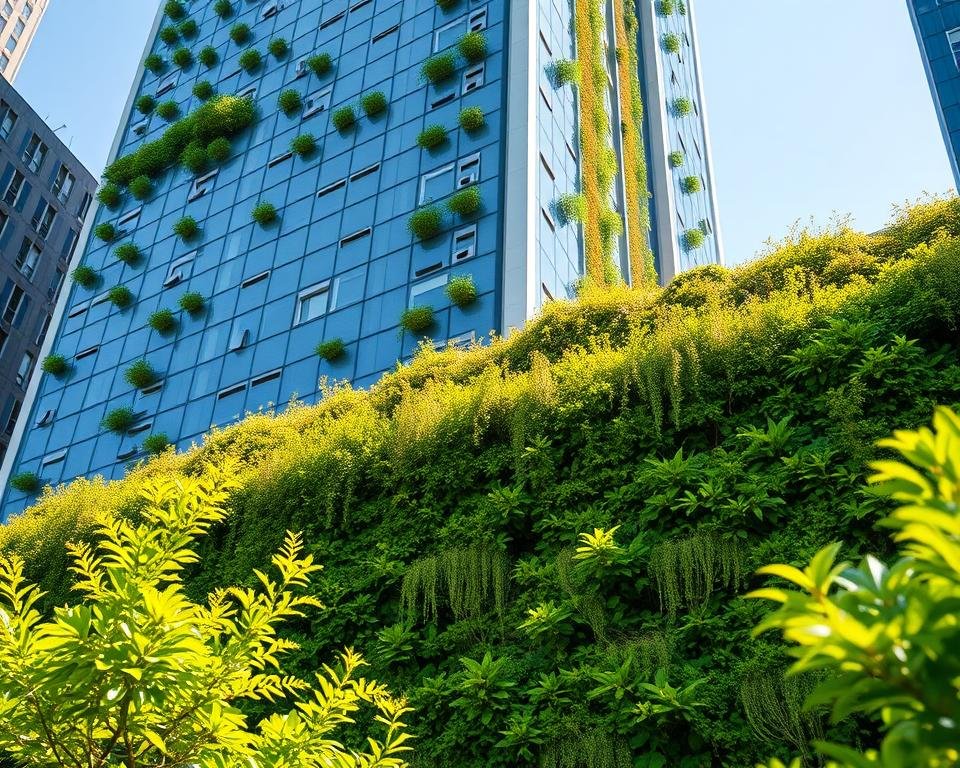
Green roofs and living walls are changing cityscapes for the better. They do more than look good. They help manage stormwater, save energy, and restore urban ecosystems.
Let’s look at the good things about roof-gardens:
- Improved Air Quality: Green roofs clean the air by removing pollutants and CO2 and adding oxygen
- Energy Efficiency: They help control building temperatures, cutting energy use by up to 25%
- Stormwater Management: They soak up and filter rainwater, reducing flood risks
- Noise Reduction: They act as natural barriers in busy cities
Living roofs also have a big impact on the environment. They create homes for insects, birds, and plants, boosting urban biodiversity.
| Green Roof Type | Growing Medium Depth | Typical Applications |
|---|---|---|
| Extensive | 2-6 inches | Lightweight residential and commercial roofs |
| Semi-Intensive | 4-8 inches | Mixed plantings, moderate maintenance |
| Intensive | 8-24 inches | Rooftop gardens, diverse vegetation |
Places like the Chicago City Hall and Vancouver Convention Centre show what green roofs can do. They turn urban areas into green, thriving spaces.
Green roofs aren’t just a trend—they’re key for making cities more resilient and green.
Even though starting costs are high, the long-term gains are worth it. They extend roof life, save energy, and boost property value. This makes them a wise choice for architects and city planners.
Designing Integrated Green Systems for Maximum Effect
Creating successful vegetative roofs and vertical-gardens needs careful planning and new design strategies. We must integrate green infrastructure into cities in a way that meets both architectural and ecological needs.

When designing biophilic design systems, several key factors must be considered. These ensure the systems are sustainable and work well over time.
Structural Considerations and Load Requirements
Urban buildings must check their structural strength before adding green systems. Important things to look at include:
- Building foundation strength
- Weight-bearing capacity
- Waterproofing membrane integrity
- Roof angle and surface configuration
Plant Selection and Maintenance Strategies
Choosing the right plants is key for vegetative-roofs. Your plants should be:
- Drought resistant
- Adaptable to local climates
- Easy to maintain
- Have the right root system
Water Management Systems Integration
| System Type | Water Efficiency | Installation Complexity |
|---|---|---|
| Rainwater Harvesting | High | Medium |
| Drip Irrigation | Very High | Low |
| Moisture Sensors | High | Low |
Using smart water management can cut down water use while keeping green spaces healthy. Studies show that good designs can lower water use by 50% compared to old landscaping methods.
Successful Implementation Case Studies Around the World
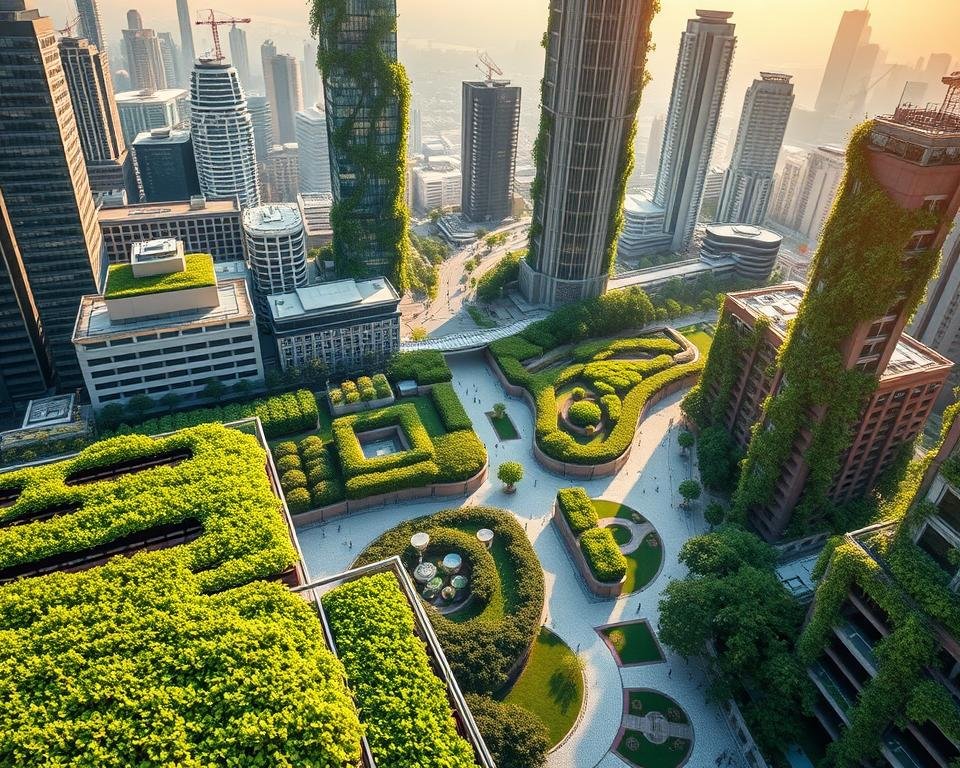
Sustainable architecture is changing cities all over the world. It’s making urban areas greener and more livable. Cities are finding new ways to deal with environmental problems and make living spaces better.
Many projects show how green systems can work together:
- The Santalaia Building in Bogotá, Colombia: It’s covered in 115,000 plants.
- Bosco Verticale in Milan, Italy: It’s a vertical forest.
- One Central Park in Sydney, Australia: It has huge vertical-gardens.
- Hotel Oasia Downtown in Singapore: It’s a new take on green architecture.
These projects show how cities can change for the better. Green infrastructure brings many benefits, like:
- Lowering the urban heat island effect
- Improving air quality
- Boosting biodiversity
- Making cities look better
| City | Green Roof Coverage | Key Achievement |
|---|---|---|
| Toronto | 1.1 million m² | Mandatory green roof legislation |
| Singapore | 155 hectares | Skyrise Greenery Initiative |
| Chicago | 517,000 m² | North America’s largest green roof network |
Learning about these projects can change how you see urban sustainability. Each one is a big step toward making cities better. They show how sustainable architecture and gardening can make cities more livable and green.
Conclusion
Green roofs and vertical-gardens are changing urban landscapes. They make cities greener and more sustainable. Buildings with these features can use less air conditioning and improve air quality.
Urban sustainability is key for the future of cities. Property owners can save money and increase property values. Green roofs can save up to $200,000 over 40 years.
Starting a green roof project needs careful planning. It might cost more at first, but the benefits last a long time. Cities like Toronto and Chicago show how green roofs can make cities better.
Your actions can help make cities better. By using green infrastructure, you can make cities more livable. The future of cities depends on combining technology with caring for the environment.

